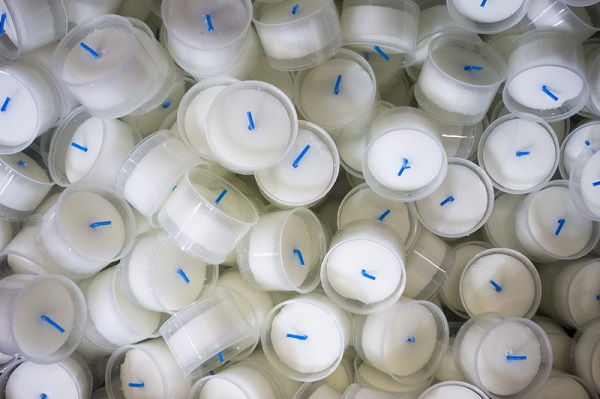
Global wax supply is projected to grow from 10.5 billion pounds in 2014 to 10.7 billion pounds in 2019, falling short of wax demand growth over that time and resulting in a wax deficit, according to Kline & Co.
Wax demand is projected to grow from 10.5 billion pounds in 2014 to 11.3 billion pounds in 2019, growing at about 9.5 percent annually, said Pooja Sharma, a project lead in U.S.-based consultancy Kline & Co.s energy practice, during an online web presentation Feb. 24. Most of that demand growth will be driven by strong increases for rheology and surface applications, Kline found, with candle wax demand expected to remain flat over that time. With demand growing much faster than supply, the overall wax market deficit will reach close to 600 million pounds by 2019.

Photo: Amsis1 / Dreamstime
While candle wax demand remains the largest end-use of waxes, its demand is projected to remain flat through 2019.
So with strong demand growth and relatively weak supply growth, the global wax market is primed to experience an increasing wax shortage, Sharma said. Despite growth in supply of synthetic as well as natural waxes, the growth in overall supply will not be enough to meet the increase in the demand. She added that the market will adapt by substituting materials and creating new formulations.
Petroleum Wax
In 2015 petroleum waxes accounted for just under a 70 percent share – about 7.3 billion pounds – though that represents a decline from about 80 percent in 2002.
This is a direct result of the reduction in [API] Group I lubricant base stock-producing plants, especially in North America and Europe, Sharma said. In the last couple of decades, the changes in lubricant refining technology have led to the erosion of petroleum wax supplies. Many Group I base oil-producing plants have either shut down or have been converted into facilities to produce high-quality base stocks, she noted.
She noted an increasing number of Group I plants are undergoing either shutdowns or conversions into high quality base stock facilities. This is driven by two factors: first, the trend toward base stock quality improvement, which makes Group I oils unviable to be used in automotive lubricants, Sharma said. And the second reason is the growing supply of Group II, which has resulted in use of Group II oil even in applications where it has no technical requirement.
Because of that continuing trend, Group I base stock supply has been shrinking for more than 10 years, she said, and it is expected to shrink further over the next five years, with a major rationalization expected in Europe.
As global petroleum wax supplies decline, she said, it will create market space for synthetic and vegetable waxes to occupy.
Synthetic Waxes
Synthetic waxes such as Fischer-Tropsch, polyethylene and alpha olefin waxes, as well as vegetable waxes like hydrogenated soy and palm, and natural palm waxes, represent the fastest-growing products in the market, according to Kline. The study found synthetic waxes share of global wax supply grew from 11 percent in 2010 to 15 percent in 2015.
According to Kline, Fischer-Tropsch waxes amounted to close to 600 million pounds in 2015, up from less than 400 million pounds in 2010. The study expects Fischer-Tropsch waxes to experience a strong growth in supply in the next five years. This will be a result of some capacity additions by existing players, as well as due to expected commissioning of some new, small-scale GTL plants, she said.
Polyethylene, polypropylene and alpha olefin waxes together added up to more than 900 million pounds in 2015, up from less than 600 million pounds in 2010.
Supply of synthetic waxes is growing fast to fill in gaps left by the decline of petroleum waxes, Sharma said. This growth will be characterized by increasing supply of FT waxes from South Africa, China and some new small-scale GTL projects expected to come up in North America, she said. As global petroleum wax supplies are tightening, buyers are getting more and more motivated to experiment with reformulations and blends containing Fischer-Tropsch and polyethylene waxes.
Vegetable Waxes
Total global vegetable wax consumption reached 1.2 billion pounds in 2015, Kline found, with supply about even.
Sharma said vegetable waxes continue to expand into the market space for softer waxes, such as slack waxes, which are in deficit now. She noted that hydrogenated palm waxes are likely to see strong growth.
Palm waxes account for nearly half of global [vegetable] wax supply, and Asia is global leader in supply of palm waxes, she said. The vegetable wax market is essentially a candle market, which requires soft waxes, Sharma added.
Vegetable waxes are also improving in quality, she noted. Improvements in hydrogenation technology for vegetable waxes will provide wax supplies with a consistent quality, she said. These waxes have the opportunity to fulfill the need for softer waxes in the petroleum wax demand basket.
The study is titled, Global Wax Industry: Market Analysis and Opportunities.